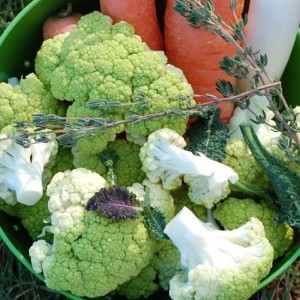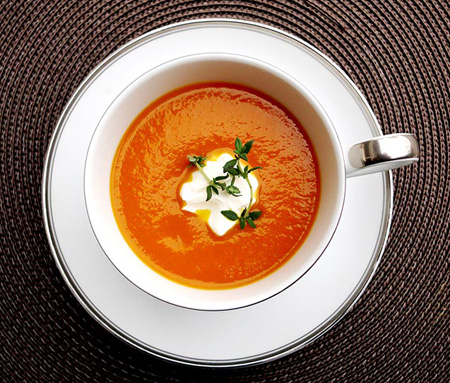
Are you still making hot chocolate from the store bought mix? This winter season, try something different. Make it from scratch, with real chocolate. It's a totally different taste experience. And there's a good chance you won't go back to a mix. And honestly, this doesn't take much longer (unless you are using instant).
I remember the first time I discovered hot cocoa did not have to come from a powdered mix, I was shocked. And this Peppermint Bark Hot Chocolate will make you a believer. I hope you will give it a chance.
The kid's eye's will pop when they see you add the Frozen Peppermint Whipped cream to the top of their mug. Cue happy music.
I broke up my peppermint bark chocolate bars into my saute pan. I love using a large saute pan to make hot chocolate. The large surface area makes it come together and heat up quickly. Easier to stir too.

 Since I require bright color to keep me happy, I make up for the weather with vegetables. One of my favorite color combos is deep green and bright orange. This week at the grocery I spotted big bunches of leafy Tuscan kale right across the aisle from a bin of blood oranges, and thought bingo! What a great combo—a truly colorful wintry mix.
Since I require bright color to keep me happy, I make up for the weather with vegetables. One of my favorite color combos is deep green and bright orange. This week at the grocery I spotted big bunches of leafy Tuscan kale right across the aisle from a bin of blood oranges, and thought bingo! What a great combo—a truly colorful wintry mix. I swear I have no idea what has come over me. I have been cranking out loaves in epic proportions. It's almost as if the loaf pans were on the counter and I just kept using them. Okay, that's really what happened.
I swear I have no idea what has come over me. I have been cranking out loaves in epic proportions. It's almost as if the loaf pans were on the counter and I just kept using them. Okay, that's really what happened.  If it’s January, I must be cooking
If it’s January, I must be cooking  This is a delicious fall/winter soup that makes a perfect first course at Thanksgiving. It’s packed with carrot flavor that’s enhanced by a double dose of ginger.
This is a delicious fall/winter soup that makes a perfect first course at Thanksgiving. It’s packed with carrot flavor that’s enhanced by a double dose of ginger.
